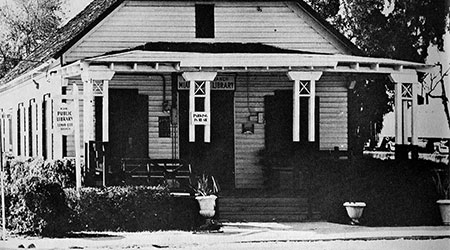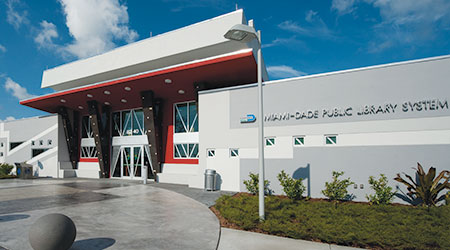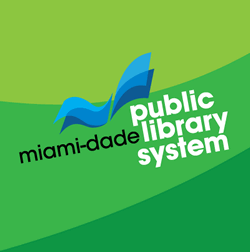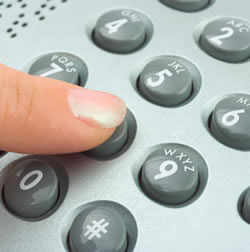About Us
From the Director Ray Baker
This is an exciting time for the Miami‑Dade Public Library System. During the past two years we have been focused on expanding our service hours for the public, investing additional funding into our print and digital collections, advancing our capital plan to renovate existing libraries and improve building infrastructure, updating our technology to provide for faster internet access and new hardware and software for our customers, and developing new innovative partnerships and services that promote learning, literacy, 21st century skills, and the importance of information and knowledge.
Moving forward, we will continue to focus on all of the above, but also on exploring new technologies that facilitate ease of access to information for our customers, ensuring that library spaces remain important destinations for community engagement and free exchange of ideas, and continuously equipping our staff with the skills and training to meet the ever‑changing needs of our customers.
We invite you to visit any of our 50 locations in person, or to access the wide range of eBooks, audio books, research and learning materials, music, and videos that are available through this website.
I welcome any comments, questions, or concerns that you may have and can be reached at bakerR@miamidade.gov.
Our Mission
To provide extraordinary services, spaces and experiences that promote literacy and learning, personal growth and limitless opportunities.
Our Vision
Enrich and inspire our community through knowledge, creativity and innovation.
2,496,435
1,921 sq. miles
50 + 2 bookmobiles & 1 Technobus
3,916,631
1,647
1,084,841
6,718,933 per year
6,762,294 per year
7,108,830 per year
History
Throughout the past century, Miamians have watched their public libraries grow from a reading room in Lemon City to 50 libraries spanning the county’s southernmost point in Naranja to its northern reaches in Sunny Isles Beach. The library system has not only grown, but also dramatically evolved in the way services are provided—all in an effort to meet the informational, educational and recreational needs of the people of Miami‑Dade County.
A Look Back

Public libraries in Miami have a long, rich history—a history that traces back to the late 19th century. The Library System as we know it today began with the Lemon City Reading Room in 1894 followed soon after with the Cocoanut Grove Reading Room (original spelling) in 1895. The earliest libraries in Miami were founded through the efforts of local women’s clubs resulting in the construction of the Coconut Grove Library in 1901 and the purchase of a storefront in 1902 that became the Lemon City Library. The first bookmobile for traveling library service began in January of 1928 and Miami residents were so proud of the bookmobile they put it in the Orange Bowl parade (then known as the Palm Fete).
In 1942, these libraries were brought together to form the City of Miami Public Library System. In 1971, city and county libraries joined forces and formed the Miami‑Dade Public Library System. Almost immediately, the new library system experienced an unprecedented boost in its growth. This expansion was a result of the 1972 Decade of Progress Bond Program—a $553 million initiative that made possible many important local projects including the construction of 13 new libraries. Through the Decade of Progress Bond Program, regional libraries were constructed in South Dade, West Dade and North Dade, as well as branches in Northeast, Model City, Kendall, Miami Lakes, South Miami, Homestead, Coral Reef and Key Biscayne. Finally in 1985, at the newly constructed Cultural Plaza in downtown Miami, a new Main Library opened.
This period of growth was followed in 1990 with the opening of two additional libraries in the areas of North Central and West Kendall. In 1992, the world’s first library on an elevated transit system opened at the Metrorail’s Civic Center station. Over the next eight years, no further expansion of the system was funded and no new libraries opened. It wasn’t until the fall of 2001, when the Mayor and Board of County Commissioners voted to increase the library system’s budget which provided funding for capital improvement initiatives—making way for the opening of 18 new libraries by the year 2011.
Today

When the Board of County Commissioners approved the library system’s Capital Plan in 2001, it was the first time in nearly a decade that the department had resources to open new libraries. The plan called for the immediate opening of a new wave of smaller libraries and the subsequent construction of 10 new libraries. These smaller libraries were fashioned after a homework center in the City of Doral and became the model for storefront libraries that were located in shopping centers throughout the County. In rapid succession, the library system successfully opened these storefront libraries in Country Walk, Hialeah Gardens, Tamiami, Naranja, Lakes of the Meadow, Concord, California Club, Doral, Palm Springs North, Opa‑locka, and Sunset.
Since 2001, eight newly‑constructed libraries have opened. These include Arcola Lakes, Golden Glades, International Mall, Kendale Lakes, Naranja, Palmetto Bay, Pinecrest, and Virrick Park. In addition, four branches have been relocated to larger facilities and major renovations have taken place at six branches.
In the more than 100 years of serving the community, the library system has experienced tremendous change and growth and all the while remaining committed to being “the compelling community destination, by providing a five‑star customer service experience.”
Miami‑Dade Library District
The Miami-Dade County Library District (Library District) includes most of Miami-Dade County with the exception of the municipalities of Bal Harbour and Surfside that do not participate in the Library District and do not operate a municipal library, as well as the municipalities of Hialeah, Homestead, Miami Shores, North Miami, and North Miami Beach, who also do not participate in the Library District but do operate municipal libraries. Miami-Dade Public Library System maintains reciprocal borrowing relationships with each of the municipalities that operate municipal libraries.
General Information
Full legal name (as cited in creation document)
Miami-Dade County Library District
Public Purpose
Library Services
Boundaries/Service Area
The Library District boundaries are the geographic boundaries of Miami-Dade County, excluding the municipalities of Bal Harbour, Hialeah, Homestead, Miami Shores, North Miami, North Miami Beach, and Surfside.
Services Provided
The service provided by the District shall include library services reflecting informational, educational, and recreational needs of our community.
Charter/Creation Document
County Ordinance 66-56
Statute or statutes under which the special district operates
Chapter 189, Florida Statutes—Uniform Special District Accountability Act and Chapter 257, Florida Statutes—Public Libraries and State Archives
Chapter 257, Florida Statutes - Public Libraries and State Archives
Date established
October 18, 1966
Establishing entity
Miami-Dade Board of County Commissioners
Contact Information
Registered agent
Raymond Baker
Mailing address
101 West Flagler Street
Miami, FL 33130
Email
director@mdpls.org
Telephone number
305-375-5026
Governing Board Members
- District 1—Oliver G. Gilbert, III (Elected term: 2024-2028)
- District 2—Marleine Bastien (Elected term: 2022-2026)
- District 3—Keon Hardemon (Elected term: 2024-2028)
- District 4—Micky Steinberg (Elected term: 2022-2026)
- District 5—Vicki L. Lopez (Appointed term: 2025-2026)
- District 6—Natalie Milian Orbis (Appointed term: 2025-2026)
- District 7—Raquel A. Regalado (Elected term: 2024-2028)
- District 8—Danielle Cohen Higgins (Elected term: 2022-2026)
- District 9—Kionne L. McGhee (Elected term: 2024-2028)
- District 10—Anthony Rodriguez (Elected term: 2022-2026)
- District 11—Roberto J. Gonzalez (Elected term: 2024-2028)
- District 11—Roberto J. Gonzalez (Elected term: 2016‑2020)
- District 12—Juan Carlos Bermudez (Elected term: 2022-2026)
- District 13—René Garcia (Elected term: 2024-2028)
Revenue Information
Taxes, fees, assessments, or charges imposed and collected
Ad Valorem Taxes
Rates or amounts for the current fiscal year
The millage rate for FY 2024-25 is 0.2812.
Statutory authority for the levy of the tax, fee, assessment, or charge
Section 189.02, Florida Statutes
General Financial Information
Fiscal year period
October 1 - September 30
Tentative budget
Proposed FY 2024-25 Budget
Final adopted budget
Adopted FY 2023-24 Budget
Budget amendments, if applicable
The final complete audit report for the most recent completed fiscal year
Comprehensive Annual Financial Report (CAFR) FY 2022‑2023
(NOTE: Financial information of the MDLD has been blended with the Miami‑Dade County primary government, and is included in the Public Library Special Revenue Fund in the Supplemental Information schedules.)










